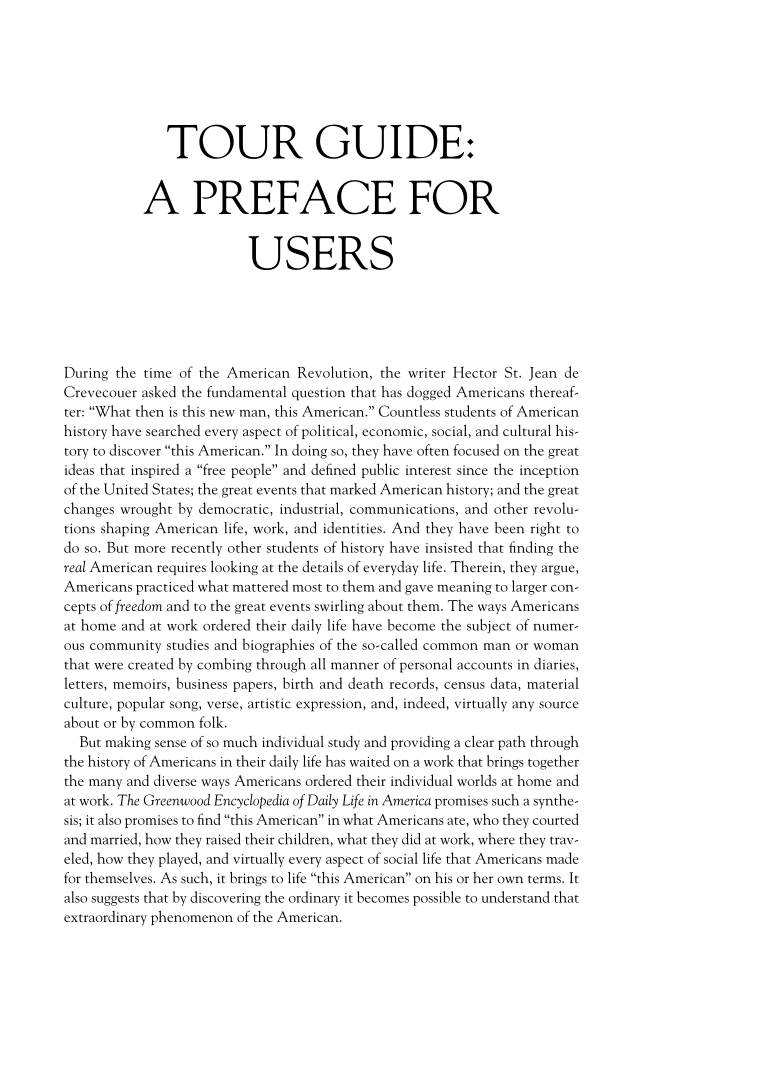TOUR GUIDE: A PREFACE FOR USERS During the time of the American Revolution, the writer Hector St. Jean de Crevecouer asked the fundamental question that has dogged Americans thereaf- ter: “What then is this new man, this American.” Countless students of American history have searched every aspect of political, economic, social, and cultural his- tory to discover “this American.” In doing so, they have often focused on the great ideas that inspired a “free people” and defi ned public interest since the inception of the United States the great events that marked American history and the great changes wrought by democratic, industrial, communications, and other revolu- tions shaping American life, work, and identities. And they have been right to do so. But more recently other students of history have insisted that fi nding the real American requires looking at the details of everyday life. Therein, they argue, Americans practiced what mattered most to them and gave meaning to larger con- cepts of freedom and to the great events swirling about them. The ways Americans at home and at work ordered their daily life have become the subject of numer- ous community studies and biographies of the so-called common man or woman that were created by combing through all manner of personal accounts in diaries, letters, memoirs, business papers, birth and death records, census data, material culture, popular song, verse, artistic expression, and, indeed, virtually any source about or by common folk. But making sense of so much individual study and providing a clear path through the history of Americans in their daily life has waited on a work that brings together the many and diverse ways Americans ordered their individual worlds at home and at work. The Greenwood Encyclopedia of Daily Life in America promises such a synthe- sis it also promises to fi nd “this American” in what Americans ate, who they courted and married, how they raised their children, what they did at work, where they trav- eled, how they played, and virtually every aspect of social life that Americans made for themselves. As such, it brings to life “this American” on his or her own terms. It also suggests that by discovering the ordinary it becomes possible to understand that extraordinary phenomenon of the American.
Document Details My Account Print multiple pages
Print
You have printed 0 times in the last 24 hours.
Your print count will reset on at .
You may print 0 more time(s) before then.
You may print a maximum of 0 pages at a time.


































































































































































































































































































































































































































































































































































































































































































































































































































































































































































































































































































































































































































































































































































































































































































































































































































































































































































































































































































































































































































































































































































































































































































































































































































































































































































































































































































































































